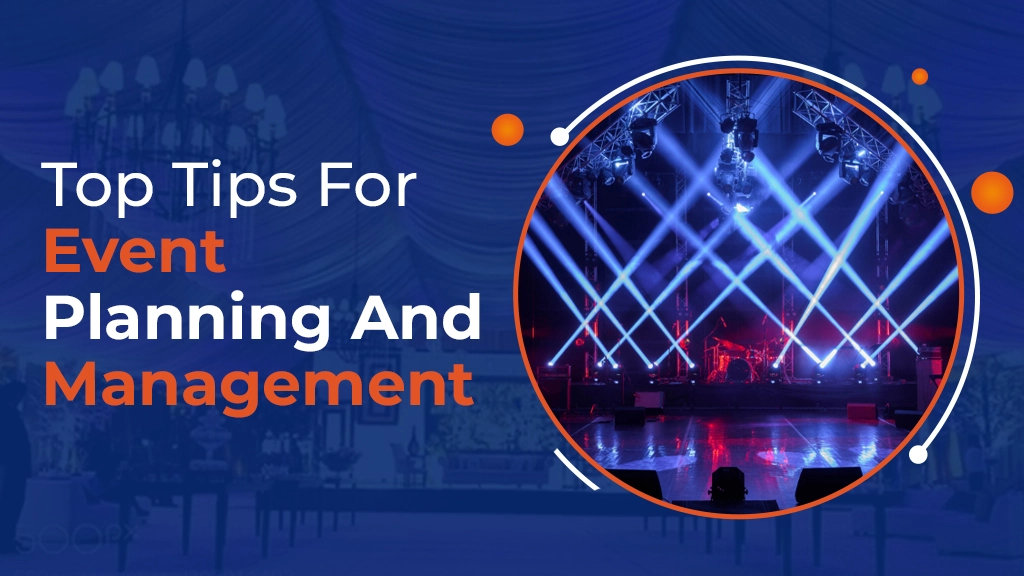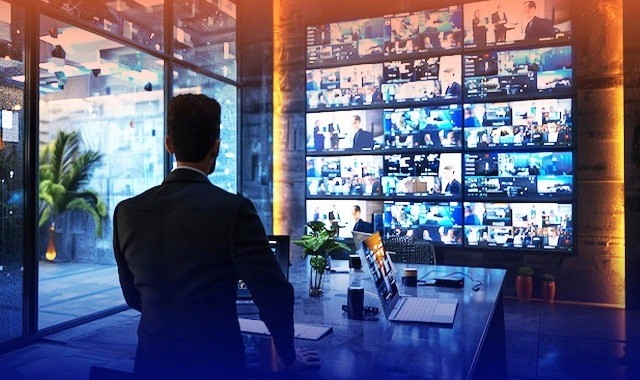
Top Tips for Event Planning and Management
- Event Concept
- Event Conceptualization
- Event Coordination
- Event Control and
- Event Culmination
Top 9 Tips for Events Planning and Management
Cost Estimation: Break down the costs into categories and get multiple quotes for each service to ensure competitive pricing. Remember to include miscellaneous expenses that are often overlooked, such as tips, taxes, and service fees.
Contingency Plan: Always prepare for the unexpected by allocating a contingency fund. This fund, typically making up 10-20% of your total budget, can cover unforeseen costs such as last-minute vendor changes or weather-related issues.
Location: Choose a location that is easy to acces by the client and is convenient. . This convenience is crucial for maximizing attendance and ensuring a smooth start to the event.
Facilities: Verify that the venue can accommodate the size of your event, from seating arrangements to dining facilities. Check for the availability of advanced technological support for presentations and telecommunications, especially if your event includes remote participants.
Event Tech Tools: Utilize event management software that offers features like automated registration, attendee tracking, and real-time analytics. These tools can significantly reduce the manual workload and help in managing large volumes of data efficiently.
Mobile Apps: Consider developing a mobile app for your event that provides attendees with schedules, speaker bios, venue maps, and networking opportunities. An app can also be used to send push notifications to attendees about session times and any changes in the schedule.
Interactive Sessions: Design your event schedule to include interactive workshops, breakout sessions, and panel discussions that encourage active participation. Use polling and Q&A sessions to involve the audience and keep them engaged.
Entertainment and Breaks: Strategically place entertainment segments and sufficient breaks throughout the event to keep energy levels high. This could include performances, interactive games, or even a short fitness session to rejuvenate your guests.
Personalization: Personalize the experience for attendees by using data collected during registration (interests, professional background) to tailor content and networking opportunities.
Clear Schedule: Provide a clear and concise schedule that details all the activities, including start and end times, locations within the venue, and who will be presenting.
Participant Guides: Prior to the event, distribute a guide to all participants that includes the itinerary, map of the venue, and other useful information such as emergency contacts and Wi-Fi access.
Flexibility: While it’s important to stick to the schedule, always plan for some flexibility. Unexpected issues may arise—speakers might go over time, or technical issues may occur. Having buffer times between sessions can help accommodate these without disrupting the entire timetable.
Know Your Audience: Understand who your audience is and what they are looking for. This will help in crafting targeted messages that resonate with potential attendees.
Multichannel Approach: Use a combination of email marketing, social media, content marketing, and even offline promotions to reach a wider audience. Each channel can be used to highlight different aspects of the event, from keynote speakers and sessions to networking opportunities.
Engagement Before the Event: Start engaging with potential attendees well before the event through teasers, countdowns, and sneak peeks. This builds anticipation and keeps your event top of mind.
Roles and Responsibilities: Clearly define the roles and responsibilities for each team member. This avoids overlaps and gaps in tasks. For instance, assign specific team members to handle logistics, registration, tech support, and guest relations.
Use of Project Management Tools: Implement project management software to track progress, set deadlines, and communicate updates. Tools like Asana, Trello, or Monday.com can help keep your team aligned and accountable.
Regular Meetings and Updates: Schedule regular check-ins to discuss progress, challenges, and updates. This keeps everyone informed and allows for adjustments to be made as needed. Effective communication is key to avoiding last-minute surprises.
Post-Event Engagement: Send thank-you emails, share event highlights, and provide access to resources like session recordings or presentation slides to keep the conversation going.
Feedback Collection: Use surveys or feedback forms to gather attendees’ thoughts on what went well and what could be improved. This information is invaluable in enhancing future events.
Performance Review: Analyze the feedback and overall event performance to identify key successes and areas for improvement. Discuss these in a post-event meeting with your team to celebrate successes and learn from any missteps.
SHARE ON


